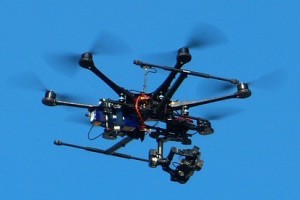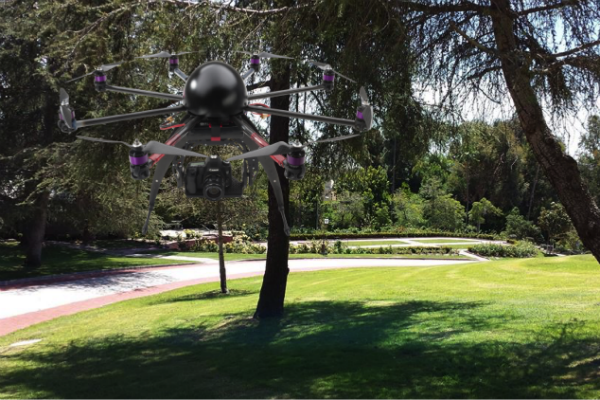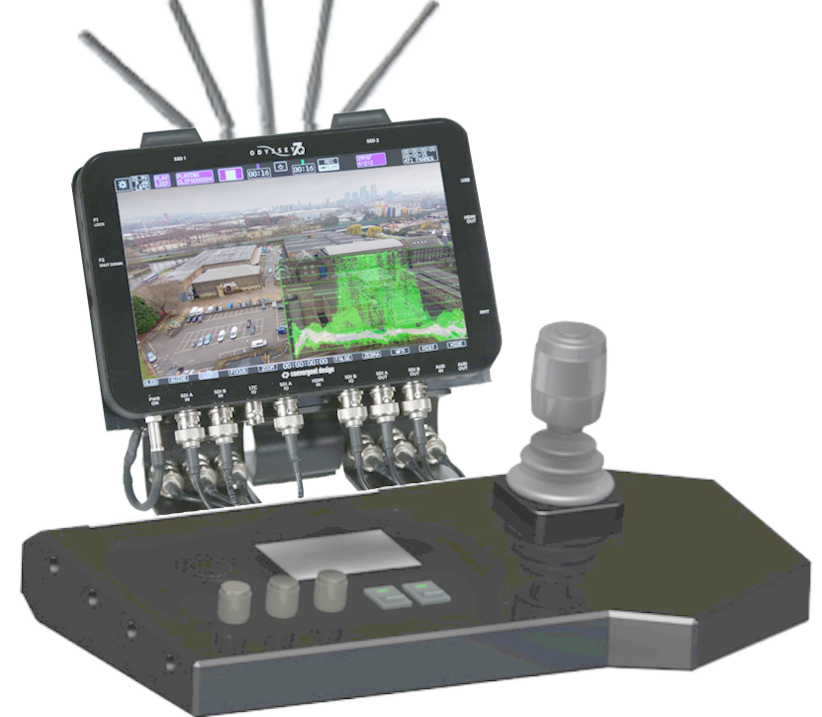Drones amongst us – what can we do about them?
 A few weeks ago, a friend observed a drone in front of her house when she went to investigate an unusual sound. For about 15 minutes she watched it hover above trees, moving back and forth 15 to 20 feet in both directions. She felt violated as she assumed the drone was filming her and her home and she asked me about the legalities of the situation.
A few weeks ago, a friend observed a drone in front of her house when she went to investigate an unusual sound. For about 15 minutes she watched it hover above trees, moving back and forth 15 to 20 feet in both directions. She felt violated as she assumed the drone was filming her and her home and she asked me about the legalities of the situation.
I contacted the cyber division of a police department and I also spoke unofficially with a Los Angeles Cyber Crime FBI agent. I learned that while there may not be specific laws addressing drones in some cities, there are unlawful surveillance laws, trespass laws, anti-stalking laws and Peeping Tom laws that apply to the use of general technology. In my interpretation that means that yes, we are loosely protected from drones by the law!
Last weekend, my hubby and I were completing an uphill hike in a beautiful historic park and my hubby panicked when we heard a loud buzzing sound. Since bugs don’t freak me out as much as they do him, I ignored the buzzing and paid more attention to my heavy breathing as I climbed the stairs. The sound disappeared as we exited the park on a street in an upscale residential neighborhood. Then we heard it again. It was not a swarm of bees. Flying high above a house was a drone controlled by a man with a complex remote control. Hubby was relieved there were no bees, but I felt super uncomfortable.
I did not appreciate that the drone had possibly filmed our hike (for no reason except that I didn’t like the idea of being recorded without my knowledge/permission) and I didn’t think the homeowners would appreciate it filming their homes either. What if residents were enjoying their backyard in private? Let your imagination fill in the blanks of what a drone could potentially observe. I asked the drone operator what he was doing and he responded, “getting aerial shots.” As we walked away, I called the local police department and they confirmed that flying a drone in this neighborhood was a violation of the city’s Municipal Code 5-6-604 – Prohibition against using an unmanned aircraft to record or transmit visual or audio recordings. The police department dispatched an officer but we did not stick around for the results.
My thoughts: Operated recklessly and in the wrong hands, a drone can invade privacy and inflict physical damage on people and properties if they collide or crash. Used responsibly, they can provide valuable services. But we need to be proactive. Let me explain:
Drone applications are diverse with government sanctioned, commercial and personal purposes. For this article, let’s put government use aside and focus on commercial and personal/recreational use only. An example of personal use is a young man who takes “selfies” to a new level by using his drone for aerial photos of himself all around the world. Once a drone is used to take video or photos for compensation or sale, it is considered non-recreational (or commercial) operation and approval is required from the FAA in the form of a FAA Unmanned Vehicle Certification.
No doubt there is a negative side and creepy factor to drones, but their practical and positive functions cannot be ignored. As such, we can expect to encounter drones in increasing numbers in the near future.
Some valuable “commercial” drone functions include:
- Aerial shots of properties for sales purposes
- Spectacular scenic and portrait photography (wedding, surfing etc)
- Public Safety: Searching for critically missing persons (children, mentally ill adults, hikers)
- Agricultural drones – Time and cost effective for determining watering needs and pest infestations
- Construction Management (Surveying and monitoring)
- Insurance claim investigations (Rooftop, crop damage)
- Risk assessment – search and rescue
- Marketing purposes (This is a slightly questionable benefit because it is likely to annoy consumers as it benefits marketers)
Increasing drone use will likely lead to increasing misuse. For example, not following FAA guidelines can put people and property at risk in multiple ways. If you observe a drone operator veering from the guidelines below, please take action and report them!
FAA’s safety guidelines for recreational use:
- Fly below 400 feet and remain clear of surrounding obstacles
- Keep the aircraft within visual line of sight at all times
- Remain well clear of and do not interfere with manned aircraft operations
- Don’t fly within 5 miles of an airport without contacting the airport and control tower before flying
- Don’t fly near people or stadiums
- Don’t fly an aircraft that weighs more than 55 lbs
- Don’t be careless or reckless with your unmanned aircraft – you could be fined for endangering people or other aircraft.
My drone-related suggestions:
- Always be aware of your surroundings. (Good rule any time, actually)
- If you hear a strange sounds, investigate further – it may be a drone.
- If you see a drone in an inappropriate location or if you see a drone that appears to be flying dangerously, immediately make a report to local law enforcement or the FAA .
Please do not assume someone else will take action and report a “misbehaving” drone if you don’t do it yourself. It takes a village and we need to work together to fight for our right to privacy and safety before something terrible happens.
Until next time,… Stay Cyber Safe!








I’m with Renee. Can I bat a tennis ball at it? My aim isn’t great, but with practice…who knows? Thanks for giving us a taste of what to come and what to do about it.
Yup. I sense our collective frustrations here. But just like I said to Renee, don’t do it! Save your tennis balls for something more important – maybe even tennis. That said, sometimes I wish I could send a ball in the direction of my hubby when he opens the fridge for the 10th time in a hour and leaves the door ajar while he looks to see if anything new has appeared in the fridge since the 10 minutes before that. Does your hubby do anything that you could send a ball his way for? Just kidding … all round. I don’t want to send a ball my hubby’s way either, and I’m sticking to THAT story.
Once Google started mapping the world, we were all exposed…..drones just take it to a newer more invasive level.
Good point, Cheryl. It has been a natural progression with increasing levels of invasiveness over time. I actually like Google maps and see the greater good they provide. Private and commercial drones in residential areas and in places where they don’t have a practical function such as search and rescue or agricultural surveillance seem far more likely to invade privacy whether intentionally or by accident. Then we have Google Glass, Smartphones and SmartWatches. They’re simply different versions of technology that invade our privacy – some being more acceptable than others, all capable of secretly recording an unsuspecting victim. I’m happy that Google Glass seems to have fallen by the wayside. But that still leaves watches and cell phone cameras.
Great article, Hayley! My question: Can I throw a rock at it if I see a drone in my backyard? LOL
So…. as much as I’d like to tell you yes, the answer is no. Instead, keep the non-emergency number for your local police department on speed dial and call them the moment you see one. Make sure you have enough accurate information so that the police can locate and identify the “perpetrator” – location, description of person with remote, vehicle they’re driving if you can figure that out etc.